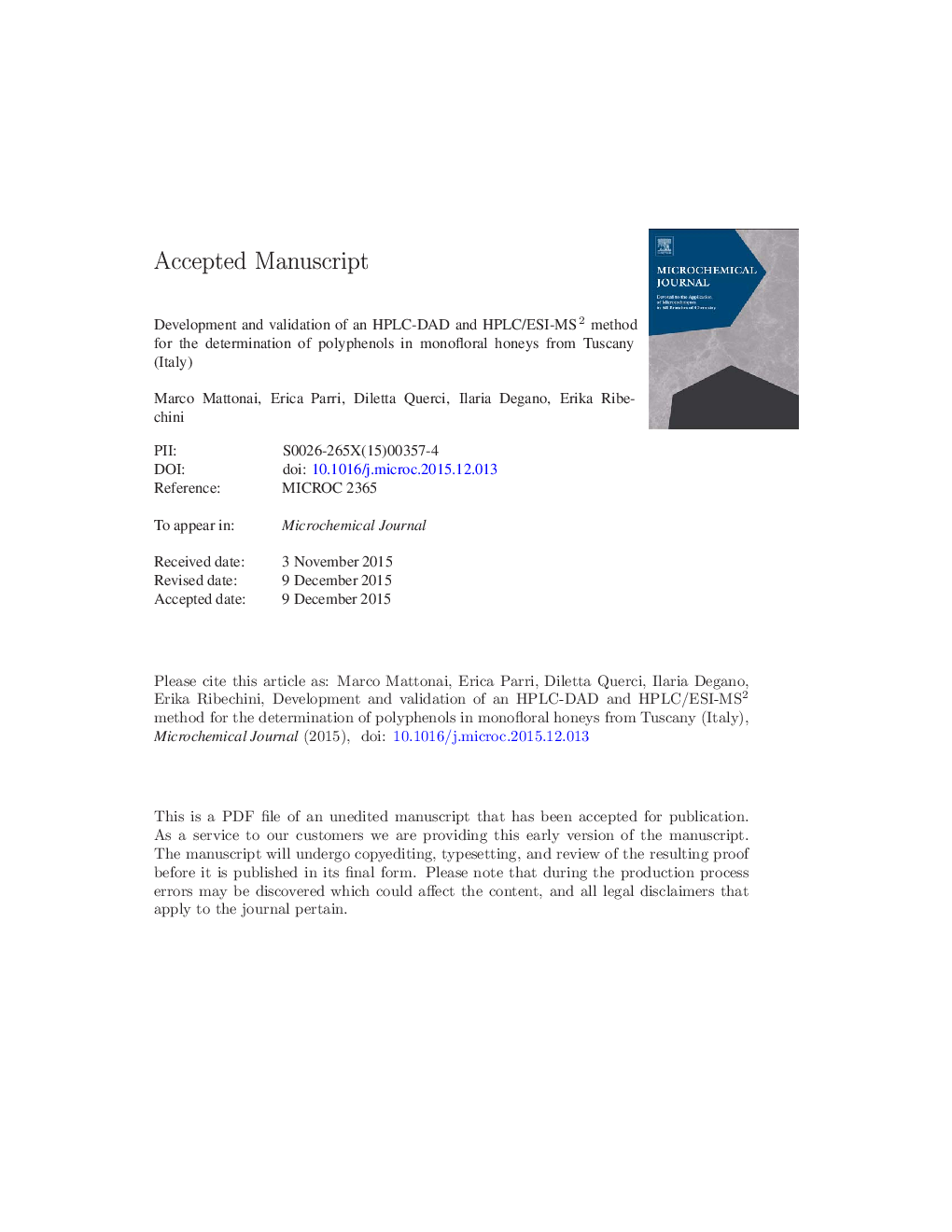| Article ID | Journal | Published Year | Pages | File Type |
|---|---|---|---|---|
| 7641476 | Microchemical Journal | 2016 | 35 Pages |
Abstract
A novel analytical procedure based on solid-phase extraction, HPLC-DAD and HPLC-MS2 analyses is here presented for the study of seven different monofloral honey types from Tuscany (Italy) in terms of their phenolic content. In particular, an embedded polar group RP-Amide stationary phase is employed in order to achieve the separation and quantitation of 24 different polyphenols. Extraction recoveries and dynamic linear ranges are determined, and limits of detection as low as 1 ng/g are obtained. Quantitation of the polyphenol content revealed total concentrations in the order of 100-102 μg/g, with chestnut honeys showing the highest results. Further analyses with HPLC-MS2 proved invaluable in the identification of unknown compounds found in the honeys. Processing of the chromatographic data via Principal component analysis divided the sample pool in three groups. Each group showed distinctive traits that can be used to distinguish some of the honey types from the others.
Related Topics
Physical Sciences and Engineering
Chemistry
Analytical Chemistry
Authors
Marco Mattonai, Erica Parri, Diletta Querci, Ilaria Degano, Erika Ribechini,
